

Nitrogen in the Environment: What is Nitrogen?
Reviewed
Nitrogen, vital to life, exists abundantly in the atmosphere but must be converted for plant use. Excess nitrates can contaminate water, posing health risks.
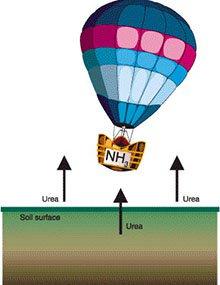
Nitrogen in the Environment: Ammonia Volatilization
Reviewed
Ammonia gas can be lost from the soil and return to the atmosphere. Visit our site to learn about Nitrogen in the Environment: Ammonia Volatilization.
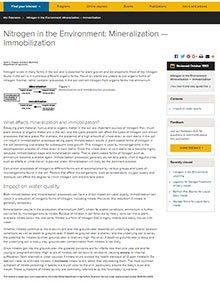
Nitrogen in the Environment: Mineralization — Immobilization
Reviewed
Nitrogen in soil undergoes mineralization and immobilization, affecting plant growth and water quality. Excess nitrate may contaminate groundwater, posing health risks.
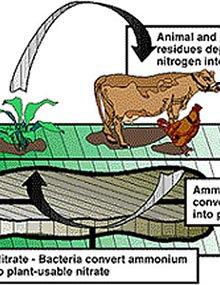
Nitrogen in the Environment: Nitrogen Cycle
Reviewed
Nitrogen in the soil can go through many complex chemical & biological changes. Visit our site to learn about Nitrogen in the Environment: Nitrogen Cycle.
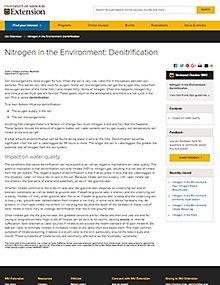
Nitrogen in the Environment: Denitrification
Reviewed
Denitrification converts soil nitrates to nitrogen gas. It occurs in low-oxygen soils and can impact water quality.
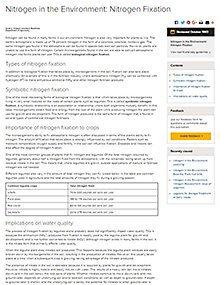
Nitrogen in the Environment: Nitrogen Fixation
Reviewed
Nitrogen fixation converts atmospheric nitrogen into plant-usable forms, enhancing soil fertility and reducing fertilizer needs.
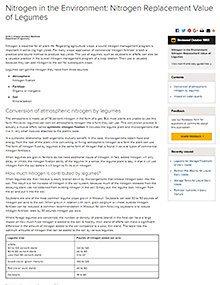
Nitrogen in the Environment: Nitrogen Replacement Value of Legumes
Reviewed
Legumes convert atmospheric nitrogen into usable forms, enriching soil and reducing fertilizer needs for subsequent crops.
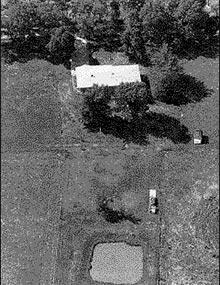
Residential Sewage Lagoon Systems: A Homeowner's Guide to Installation and Maintenance
Reviewed
Residential sewage lagoon systems treat household wastewater using a septic tank and an earthen pond, an option where public sewers aren't available.
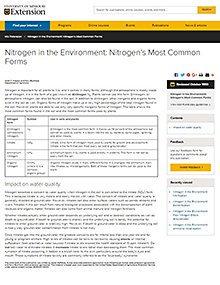
Nitrogen in the Environment: Nitrogen’s Most Common Forms
Reviewed
Nitrogen is important for all plants and it comes in many forms. Visit our site to learn about Nitrogen in the Environment: Nitrogen's Most Common Forms.
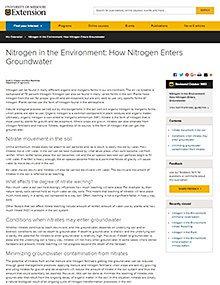
Nitrogen in the Environment: How Nitrogen Enters Groundwater
Reviewed
Nitrate from fertilizers and manure can leach through soil into groundwater, especially in sandy soils or areas with shallow water tables.
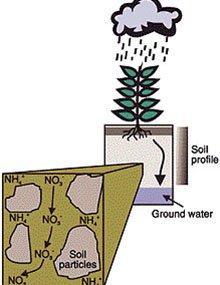
Nitrogen in the Environment: Leaching
Reviewed
Nitrate leaching occurs when excess water carries nitrates through soil into groundwater, posing health risks, especially to infants.
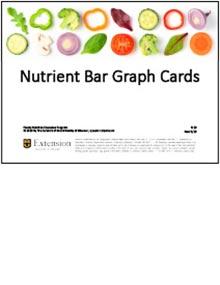
Nutrient Bar Graph Cards
New $30
Explore over 40 colorful nutrient bar graph cards to compare daily values of key nutrients in various foods, aiding effective nutrition education.
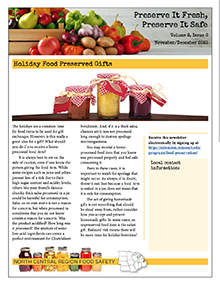
Preserve It Fresh, Preserve It Safe: 2022, No. 6 (November/December)
New
Learn how to safely preserve foods for the holidays, including tips on canning, pickling, and handling home-processed gifts for safe consumption.
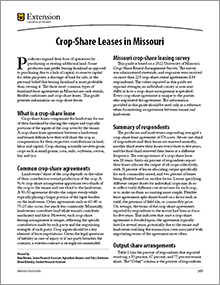
Crop-Share Leases in Missouri
Revised
Producers expand their base of operations by purchasing or renting additional land. The three most common types of farmland lease agreements in Missouri are cash rentals, flexible-cash leases and crop-share leases. This guide presents information on crop-share leases.
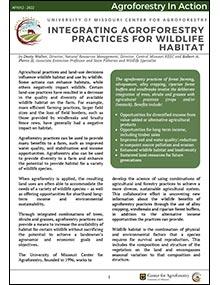
Integrating Agroforestry Practices for Wildlife Habitat
Revised
Learn how to incorporate management of trees, shrubs and grasses with your current farm practices to benefit white-tailed deer, eastern wild turkey, bobwhite quail, waterfowl and mourning doves.

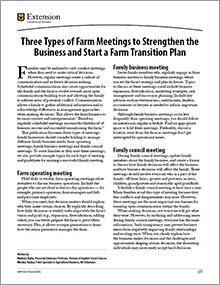
Three Types of Farm Meetings to Strengthen the Business and Start a Farm Transition Plan
New
Use operating, business and family council meetings to build a culture of communication and inclusive decision-making in your family business.

Tiger Card (Bundle of 50)
Reviewed $26
This promotional piece is intended for Family Nutrition Education Program employees to use as needed.
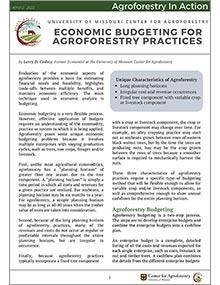
Economic Budgeting for Agroforestry Practices
Revised
See the steps and examples you can follow to develop enterprise budgets, create a cashflow plan and estimate economic indicators for agroforestry practices.
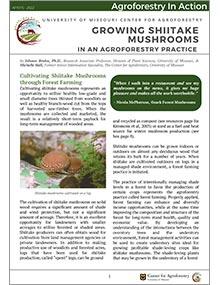
Growing Shiitake Mushrooms in an Agroforestry Practice
Revised
Cultivating shiitake mushrooms represents an opportunity to utilize healthy low-grade and small-diameter trees thinned from woodlots as well as healthy branch-wood cut from the tops of harvested saw-timber trees. When the mushrooms are collected and marketed, the result is a relatively short-term payback for long-term management of wooded areas.

Identification and Management of Turfgrass Diseases, Page 03
Reviewed
Guidelines on managing turfgrass diseases, focusing on key prevention strategies such as proper fertilization, mowing, and fungicide use.
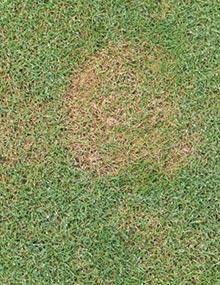
Identification and Management of Turfgrass Diseases, Page 06
Reviewed
Copper spot is a foliar disease of bentgrass, with severest outbreaks occurring on velvet bentgrass. It also occurs sporadically on creeping bentgrass greens and higher cut creeping bentgrass tees and fairways. Gloeocercospora sorghi causes a leaf spot of bermudagrass and zoysiagrass as well.
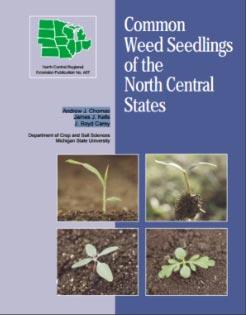
Common Weed Seedlings of the North Central States
Reviewed
Editor’s note
The following abstract describes a publication that is available for purchase from Michigan State Extension. To order this publication, please visit the MSU Extension Bookstore.
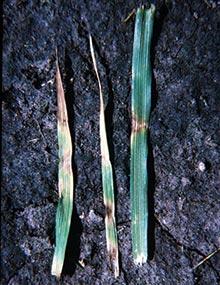
Identification and Management of Turfgrass Diseases, Page 09
Reviewed
Drechslera diseases are part of a group of diseases caused by fungi that were once cataloged in the genus Helminthosporium. Over the years, taxonomists have revised the genus Helminthosporium to include the genera Drechslera, Marielliotta, Bipolaris and Exserohilum. This section covers the diseases Drechslera leaf spot and melting-out caused by D. poae and red leaf spot caused by D. erythrospila.
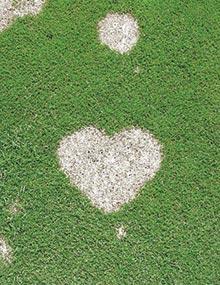
Identification and Management of Turfgrass Diseases, Page 12
Reviewed
Gray snow mold is a winter turfgrass disease in regions where snow cover persists for long periods. All grasses can be damaged to some extent, but injury is often more severe on annual bluegrass and bentgrass putting greens.